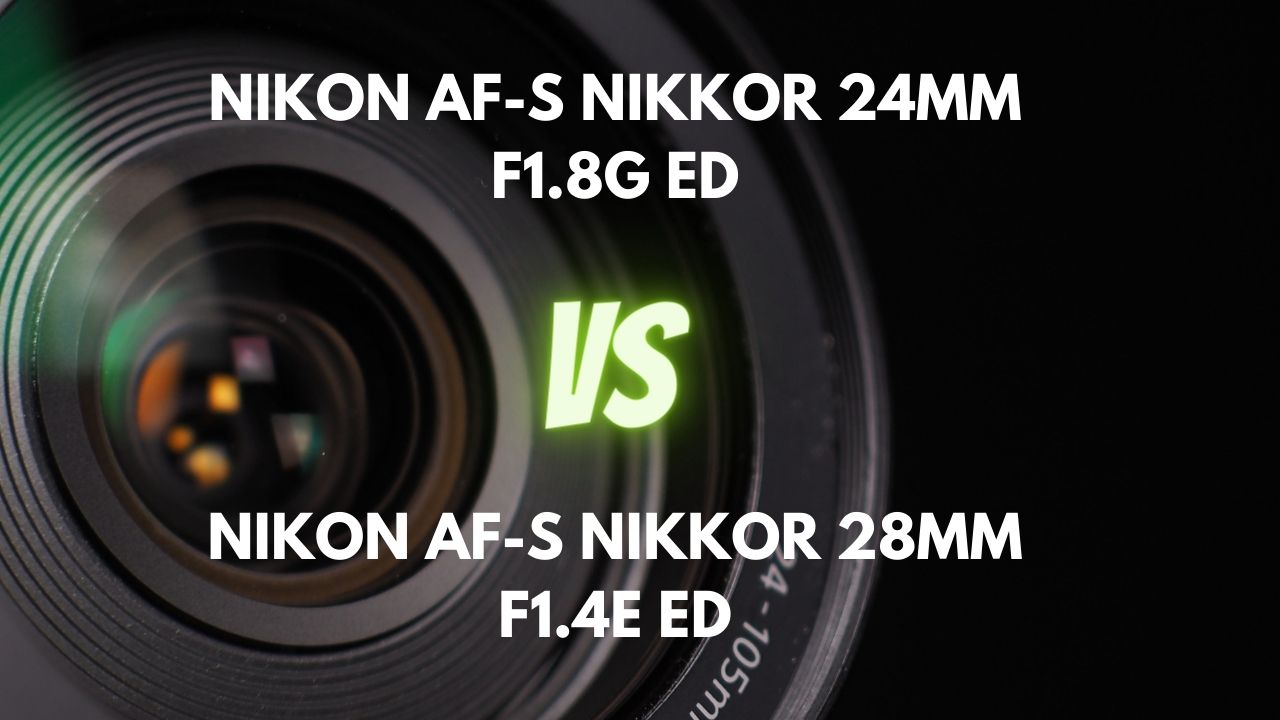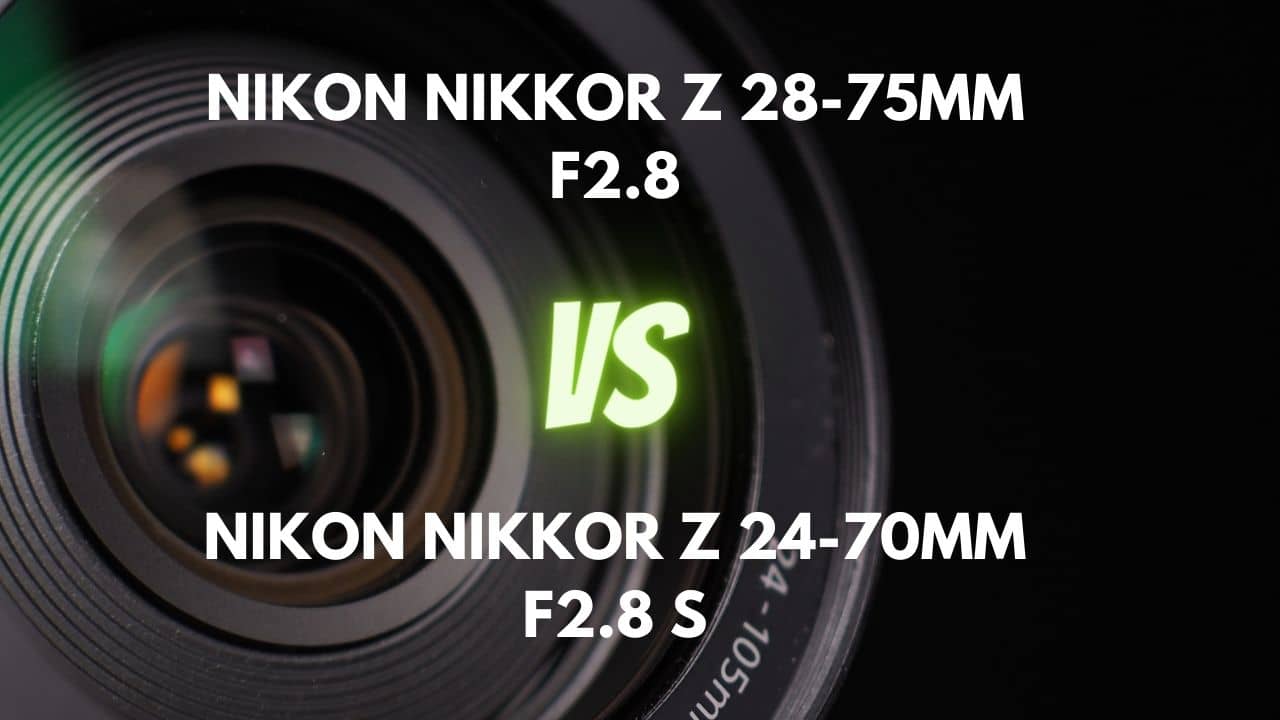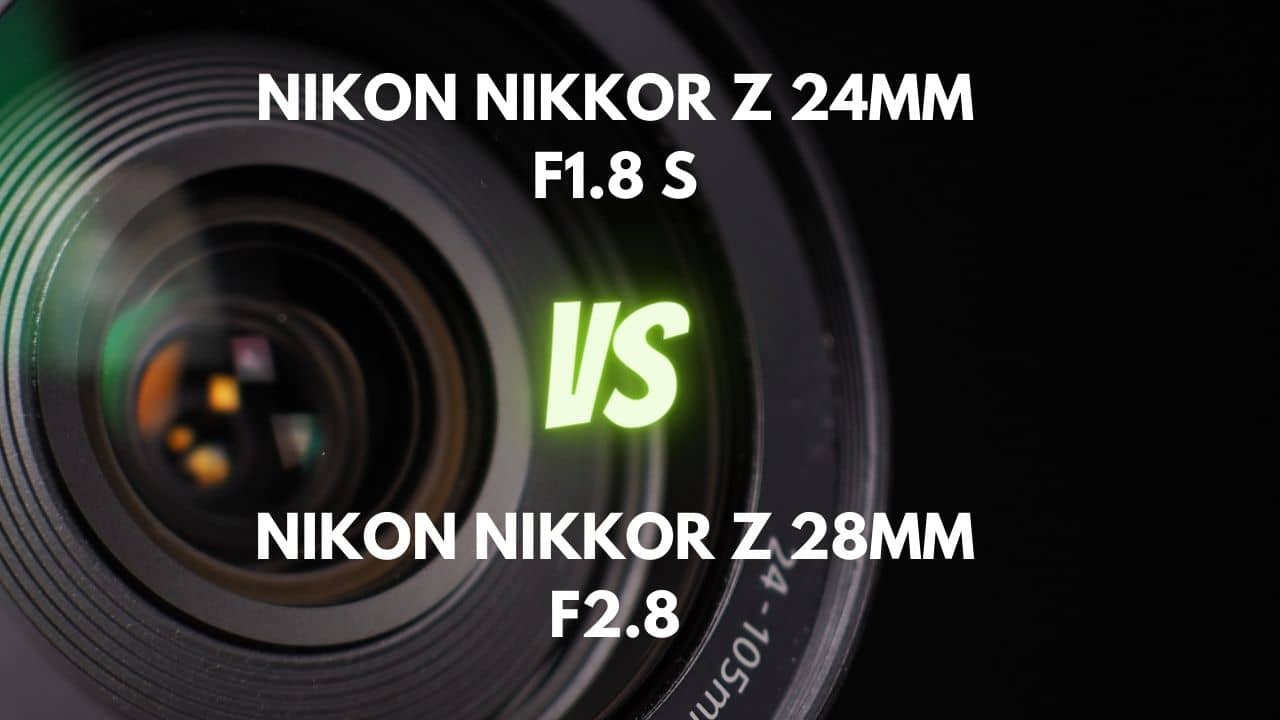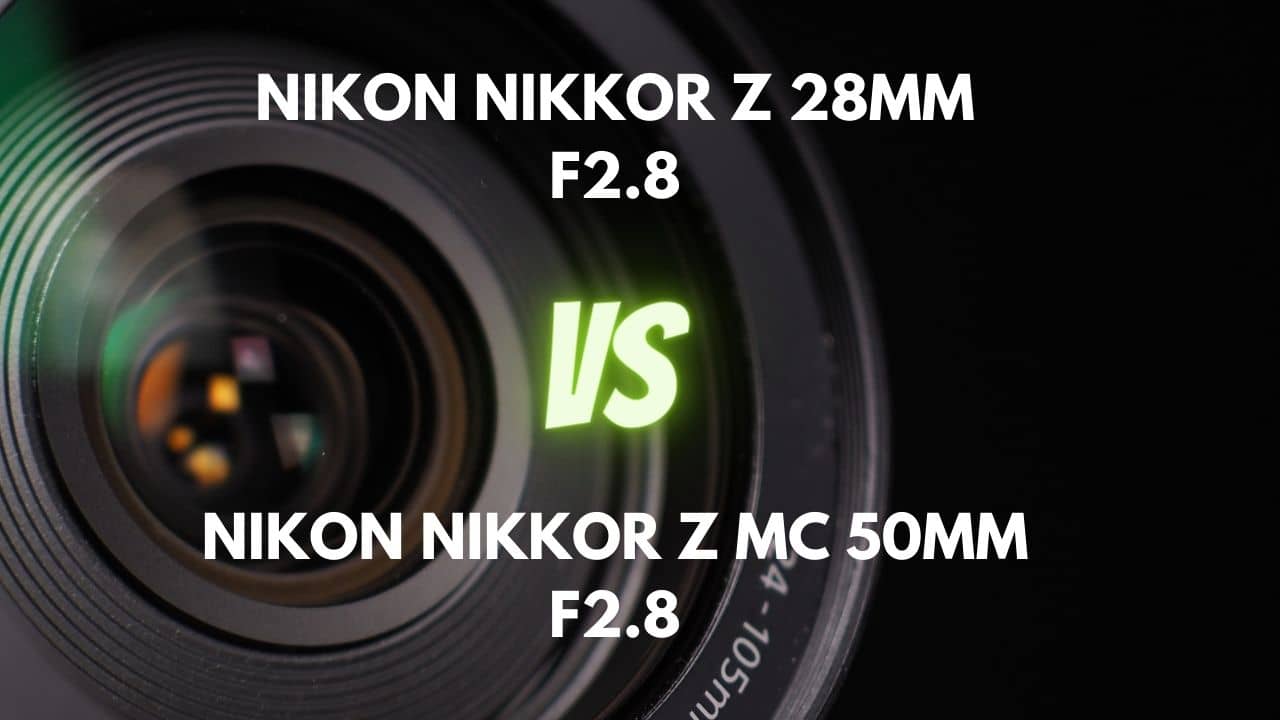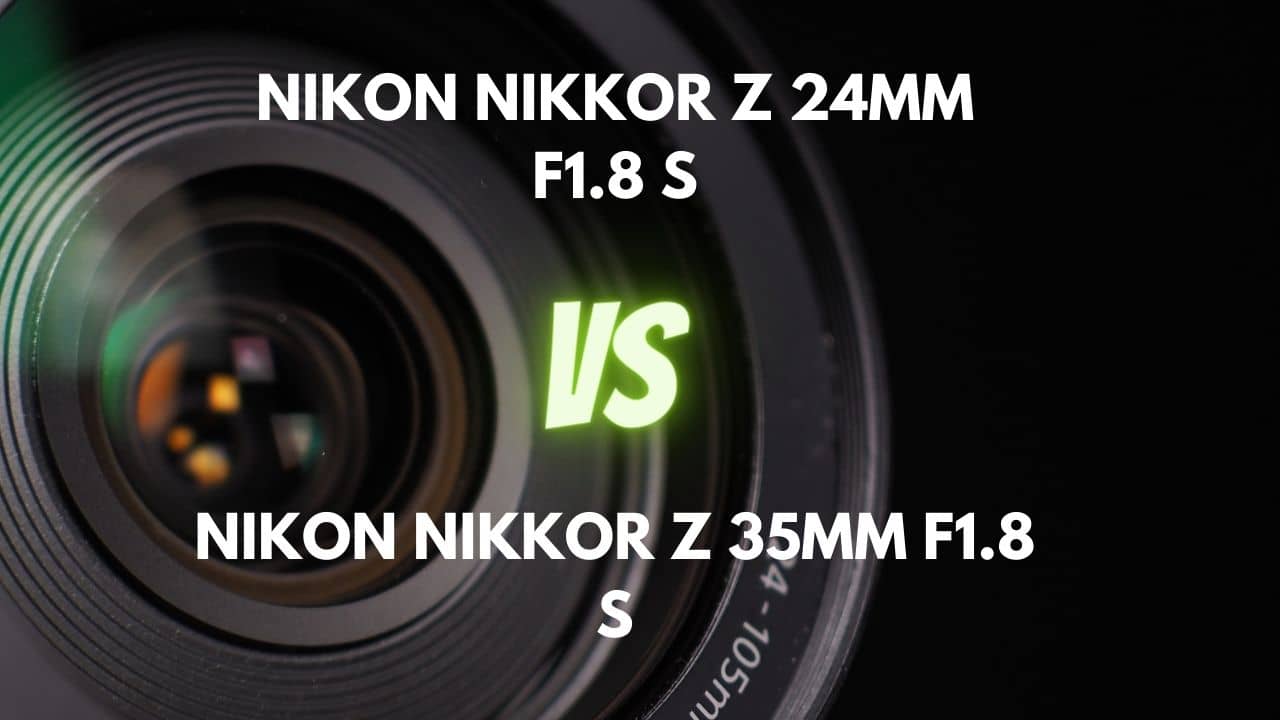Are you on the hunt for the perfect wide-angle lens to elevate your photography game?
Whether you’re capturing breathtaking landscapes, intricate architectural details, or engaging environmental portraits, having the right lens can make all the difference.
Today, we’re putting two exceptional wide-angle lenses under the spotlight: the Nikon 20mm f/1.8 and the Sigma 20mm f/1.4.
In this comprehensive comparison, we will delve into the features, performance, and versatility of these lenses to help you make an informed decision based on your specific needs and photography style.
So, join us as we explore the strengths and weaknesses of these two remarkable lenses and uncover the secrets to their success in wide-angle photography.
Get ready to be inspired and unlock your full creative potential!
Overview
| Nikon AF-S NIKKOR 20mm F1.8G ED | Sigma 20mm F1.4 DG HSM A Nikon | |
|---|---|---|
| Max Aperture | F1.8 | F1.4 |
| Aperture Type | Fixed | Fixed |
| Focal Range (mm) | 20 | 20 |
| Mount Type | Nikon F (FX) | Nikon F (FX) |
| Zoom Ratio (X) | 1 | 1 |
Comparing the Nikon 20mm f/1.8 and Sigma 20mm f/1.4 wide angle lenses, both have a fixed aperture and a 20mm focal range, suitable for Nikon F (FX) mount type. The main difference between these two lenses is their maximum aperture values, with the Nikon lens having an f/1.8 aperture and the Sigma lens offering a larger f/1.4 aperture.
A larger aperture, like the f/1.4 of the Sigma lens, can provide better low light performance and a shallower depth of field, which can be useful for isolating subjects and creating a pleasing background blur. However, in wide angle photography, a larger aperture is not always necessary, as landscape and architectural photography often require a deeper depth of field to keep the entire scene in focus. Additionally, wide-angle lenses with larger apertures may exhibit more distortion or vignetting at the widest focal lengths, which may require post-processing corrections.
The Nikon lens with its f/1.8 aperture, while not as large as the Sigma lens, can still deliver excellent image quality and perform well in most lighting conditions. Furthermore, lenses with smaller apertures are generally more compact, lightweight, and budget-friendly, which can be important factors for many photographers.
Considering the factors mentioned above, the choice between the Nikon f/1.8 and Sigma f/1.4 wide angle lenses largely depends on your specific requirements and intended use. If low light performance and shallow depth of field are crucial for your photography, the Sigma f/1.4 lens may be the better option. However, if you prioritize portability, and a deeper depth of field for landscape and architectural photography, the Nikon f/1.8 lens might be the more suitable choice.
Design and Ease of Use
| Nikon AF-S NIKKOR 20mm F1.8G ED | Sigma 20mm F1.4 DG HSM A Nikon | |
|---|---|---|
| Diameter x Length (mm) | ⌀82.5×80.5mm | ⌀91×130mm |
| Weight (gr) | 355 | 950 |
| Weather Sealing | No | No |
| Distance Scale | Yes | Yes |
| DoF Scale | No | No |
| Hood Supplied | Yes | Yes |
When comparing the Nikon 20mm f/1.8 and Sigma 20mm f/1.4 wide angle lenses, the first notable difference is their dimensions and weight. The Nikon lens has a diameter of 82.5mm and a length of 80.5mm, while the Sigma lens has a diameter of 91mm and a length of 130mm. In terms of weight, the Nikon lens is significantly lighter at 355 grams, compared to the Sigma lens weighing in at 950 grams.
In the context of wide angle photography, a more compact and lightweight lens like the Nikon lens offers several advantages, such as improved portability, better balance, increased discreetness, easier storage, and simpler lens swapping. The smaller size and lighter weight make it easier to carry around, allowing photographers to shoot for longer periods without feeling weighed down. Additionally, the Nikon lens will provide better overall balance for your camera setup, making it more comfortable to handle during extended shoots.
On the other hand, the Sigma lens, with its larger size and heavier weight, may present some challenges in terms of portability and balance. This could make it more cumbersome to carry around and potentially lead to discomfort or difficulty in handling the camera, particularly during longer shoots.
In conclusion, based on the dimensions, weight, the Nikon wide angle lens appears to be the superior choice for wide angle photography. Its compact size and lightweight design offer a more enjoyable and convenient shooting experience, allowing photographers to capture stunning images with ease and comfort.
Lens Mount and Barrel
The lens mount of Nikon 20mm f/1.8 is constructed from metal, offering durability and a secure attachment to the camera body. It also features a rubber gasket around the mount, providing protection against dust and moisture. In contrast, the lens mount of Sigma 20mm f/1.4, while also made from metal, lacks a rubber gasket, making it more vulnerable to dust and moisture ingress. This could be a concern for photographers working in harsh or unpredictable weather conditions.
As for the lens barrel, the Nikon lens primarily uses matte black polycarbonate, which contributes to its lightweight design. Its rear focusing design ensures that the lens maintains a constant size during operation, making it convenient for use with filters. The Sigma lens barrel, on the other hand, features a matte black exterior made from a durable, metal-like Thermally Stable Composite material. The focus ring on the Sigma lens has deep, sharp, tightly-spaced ribs for a comfortable grip and ease of use during operation.
In summary, if you value a lightweight design, protection against dust and moisture, and a rear focusing design, the Nikon lens may be the better option. On the other hand, if you prefer a more robust, metal-like build with a comfortable focus ring, the Sigma lens may be the superior choice.
Weather Sealing
The Nikon 20mm f/1.8 offers a degree of weather sealing, featuring a metal lens mount with a rubber gasket to protect against dust and moisture ingress. However, it lacks internal seals at the rings, switches, or front of the barrel, and the front element doesn’t have a fluorine coating. In contrast, the Sigma 20mm f/1.4 doesn’t have any weather sealing, as it lacks gaskets, internal seals, or a fluorine coating on the front element, making it more vulnerable to environmental elements.
In terms of weather sealing, the Nikon lens is superior to the Sigma lens, as it provides some protection against dust and moisture. This can be especially important for photographers who often shoot outdoors or in unpredictable weather conditions, as it ensures better durability and performance.
While weather sealing may not be a top priority for everyone, having a weather-sealed lens can offer peace of mind, protection for your investment, and the ability to focus on capturing the perfect shot without worrying about potential damage to your equipment.
Rings
The Nikon 20mm f/1.8 features a single 2.4 cm wide focus ring with a rubber surface, providing a comfortable grip. It moves smoothly with a geared feeling, but some may find it a bit tight. The focus ring rotates one-quarter turn from minimum to infinity focus and has a throw of around 80 degrees for manual focusing. However, there is slight play between the focus ring’s movement and the focus-action, which can be a nuisance for manual focusing. The lens also has a windowed distance scale and a minimal depth-of-field indicator with markings for f/16 only.
On the other hand, the Sigma 20mm f/1.4 has a single 3cm wide focus ring with a rubbery-ridged texture, offering an easy grip. It is smooth and has no play, but its movement is relatively stiff. The focus ring has a throw of around 95 degrees and allows for precise manual focusing over the entire focus distance range. The lens features a small focus distance window and scale, as well as depth of field indicators for f/8 and f/16.
In conclusion, the Sigma lens offers a superior focus ring experience due to its wider design, better grip, and greater throw, allowing for more precise manual focusing. Additionally, the absence of play in the focus ring’s movement provides a more reliable focusing experience. However, the Nikon lens still performs well, especially for those who primarily rely on autofocus.
Switches/Buttons
The Nikon 20mm f/1.8 features a single M/A-M focus mode switch on the side of the barrel, which allows users to toggle between autofocus with manual focus override (M/A) and full manual focus operation (M). This switch is easy to locate and use, being the only control switch on the lens.
On the other hand, the Sigma 20mm f/1.4 has a single AF/MF toggle switch located on its left side, which enables users to quickly switch between autofocus and manual focus modes. A high-visibility white switch background indicates AF mode, while black indicates MF mode. This switch is easily accessible and simple to use, making it convenient for photographers to change focus modes as needed. However, the Sigma lens lacks additional switches or buttons, such as a focus limiter or IS switch.
In conclusion, both Nikon and Sigma lenses offer straightforward and easy-to-use focus mode switches. The main difference between the two is the visibility of the switch background on the Sigma lens, which can be helpful in quickly identifying the current focus mode. Choosing the superior lens in terms of switches and buttons will ultimately depend on your personal preferences and shooting style, as both lenses provide accessible and user-friendly options.
Filter Thread
The Nikon 20mm f/1.8 features a 77mm filter thread made of plastic, which could wear out with repetitive mounting and dismounting of filters if not handled carefully. However, the front element and filter thread do not rotate during focusing, making it convenient to use with filters such as polarizers without needing to readjust them. This lens is compatible with standard 77mm filters, filter holder systems, and polarizing filters.
In contrast, the Sigma 20mm f/1.4 lacks a traditional filter thread due to its curved front element and integrated lens hood, making it impossible to use regular screw-in filters. To use filters with this lens, you will need to purchase a third-party adapter, such as those offered by Lee Filters or Fotodiox, which allows for compatibility with larger filter systems. The front element does not rotate during focusing, but the absence of a standard filter thread might make it more challenging to use filters, requiring additional accessories and investments.
In conclusion, the Nikon lens is superior in terms of filter thread convenience and compatibility, as it offers a standard 77mm filter thread that works with commonly available filters and systems. On the other hand, the Sigma lens requires additional investment in third-party adapters and accessories to use filters, making it less convenient for photographers who frequently use filters in their work.
Lens Hood
The Nikon 20mm f/1.8 comes with an included petal-shaped lens hood, model HB-72, made of plastic. It provides a good balance between protection and minimized vignetting. The ergonomic bevel of the lens hood is well-designed, allowing for smooth rotation when attaching or detaching it from the lens. The lens hood snaps onto the front of the lens easily and securely, offering optimal performance and protection against unwanted stray light or potential impact damage.
In contrast, the Sigma 20mm f/1.4 features an integrated lens hood, meaning it is a permanent part of the lens and not removable. It is made of light, rigid plastic with a thin inner flocking rim, allowing for smooth sliding. The hood is large enough to offer reasonable protection without being intrusive. Since it’s a fixed part of the lens design, it doesn’t have an ergonomic bevel or rotation. The integrated hood requires a non-standard lens cap, which is a slide-on type rather than a traditional snap-on cap.
In conclusion, the Nikon lens has a superior lens hood design, as it offers a removable and adjustable petal-shaped hood that provides excellent protection and performance while minimizing vignetting. The Sigma lens’s integrated hood, though offering protection, lacks the flexibility of a removable hood and requires a non-standard lens cap, making it less convenient for photographers who prefer a more adaptable lens hood solution.
Focusing and Optical Stabilization
| Nikon AF-S NIKKOR 20mm F1.8G ED | Sigma 20mm F1.4 DG HSM A Nikon | |
|---|---|---|
| Autofocus | Yes | Yes |
| AF Motor | Silent Wave Motor | Hyper Sonic Motor |
| Rotating Front Element | Does not rotate on focusing | Does not rotate on focusing |
| Min Focus Distance | 0.2m | 0.3m |
| Max Magnification (X) | 0.23 | 0.14 |
| Full-Time Manual Focus | Yes | Yes |
| Focus Method | Internal | Internal |
Focusing Performance
Comparing the focusing performance of the Nikon 20mm f/1.8 and Sigma wide-angle lenses, it’s important to consider their autofocus speed, manual focus capabilities, and performance in various shooting situations.
The Nikon lens offers fast and accurate autofocus performance, utilizing silent wave motor (SWM) technology for near-silent and quick operation. It takes about 0.6 seconds to focus from infinity to 20 cm, making it suitable for a range of shooting situations. In low-light conditions, it performs well when paired with newer Nikon camera bodies. Manual focus override is available, and the focus action is smooth, but there is some slack/play between the focus ring movement and the focus-action. Focus breathing is visible, which might be an issue for videographers.
In contrast, the Sigma 20mm f/1.4 features a Hypersonic Motor (HSM) for fast and silent autofocus, taking around 0.5 seconds to focus from infinity to 30 cm. It also has manual focus override and a smooth focus action. The focusing is internal, which means the lens length remains constant, and the front element does not rotate during focusing. In low-light situations, the lens may exhibit some focus inconsistencies but can still focus accurately after calibration. Focus breathing is not a significant issue with this lens.
In conclusion, both lenses offer impressive focusing performance for wide-angle photography. The Nikon lens provides fast and accurate autofocus, while the Sigma lens is slightly faster in focusing and has a better internal focusing design. However, the Nikon lens may offer better low-light performance when paired with newer Nikon camera bodies. Ultimately, the choice between the two lenses will depend on your specific needs and preferences, but both are strong contenders for wide-angle photography with solid focusing performance.
Optical Stabilization
Comparing the optical stabilization of the Nikon 20mm f/1.8 and Sigma 20mm f/1.4 wide-angle lenses, it is important to note that neither lens offers built-in optical stabilization. However, given the nature of wide-angle photography, optical stabilization may not be as critical for these lenses as it is for telephoto lenses.
Wide-angle lenses, with their shorter focal lengths and wider fields of view, are generally less prone to camera shake, making the effects of camera shake less noticeable. Optical stabilization can be beneficial in specific situations, such as low-light conditions, handheld shooting at slower shutter speeds, or when recording video. However, many modern cameras now offer in-body image stabilization (IBIS), which can work effectively with wide-angle lenses to minimize camera shake, even if the lens itself lacks built-in optical stabilization.
In typical wide-angle photography scenarios, such as landscape and interior photography, using a tripod can be a more effective way to achieve stability and sharpness than relying on optical stabilization. In situations where handheld shooting is necessary, a fast lens with a larger aperture may offer a more cost-effective solution for capturing sharp images than solely depending on optical stabilization.
Image Quality
| Nikon AF-S NIKKOR 20mm F1.8G ED | Sigma 20mm F1.4 DG HSM A Nikon | |
|---|---|---|
| Special Elements | 2 ED, 2 aspherical, and Nano Crystal Coat | 2 FLD, 5 SLD elements + Super Multi-Layer coating |
| Diaphragm Blades | 7 | 9 |
| Circular Aperture | Yes | Yes |
Aberration
For the Nikon 20mm f/1.8, chromatic aberration is relatively well-controlled, with only minor lateral chromatic aberrations that can be easily corrected in post-processing. Longitudinal chromatic aberration is present but reduces when stopping down to f/5.6. The lens has almost no coma, making it suitable for astrophotography when stopped down to f/2.8 or with a slight crop. However, extreme corners at f/1.8 may exhibit problematic handling of coma. Spherical aberration is not explicitly mentioned, but the lens’s performance in handling bokeh, light fall-off, and edge-to-edge sharpness can give us an idea of its performance.
On the other hand, the Sigma 20mm f/1.4 exhibits a mild amount of lateral chromatic aberration, easily corrected in software. Longitudinal chromatic aberration is present but becomes negligible by f/4.0. Coma is visible in the corners, particularly at the widest aperture, causing stars to appear elongated or distorted, though the effect is reduced as the aperture is stopped down. Spherical aberration is well-controlled, with only a minor amount of color fringing in front of and behind the plane of sharp focus.
In conclusion, both lenses perform relatively well in controlling chromatic and spherical aberrations. However, the Nikon lens has a slight advantage in coma performance, making it more suitable for astrophotography. The Sigma lens performs well overall, but users should be mindful of coma, particularly for astrophotography or situations with point light sources. Based on this comparison, the Nikon lens has a superior aberration performance, especially if astrophotography is a priority.
Sharpness
Comparing the Nikon 20mm f/1.8 and Sigma wide-angle lenses in terms of sharpness, it is crucial to consider the performance across the aperture range, as this is important for various photography styles like landscape, architecture, and street photography.
The Nikon lens offers good center sharpness at its widest aperture of f/1.8, but the corners tend to be soft at this setting. Stopping down to f/2.8 or f/4 significantly improves the overall sharpness, including the edges. The sharpest aperture for this lens is around f/5.6, where both center-weighted and edge sharpness are optimized. At f/11, diffraction sets in, but the lens still maintains impressive sharpness.
In contrast, the Sigma 20mm f/1.4 exhibits impressive sharpness, particularly in the center of the image. At its wide-open aperture of f/1.4, the center sharpness is already excellent, while the corners show some softness. As the aperture is stopped down, corner sharpness significantly improves, with the sharpest results typically occurring around f/4 to f/5.6. The lens maintains a high level of sharpness across its aperture range, with only slight diffraction-related softness appearing at f/16. Stopping down also helps to reduce chromatic aberration, resulting in clearer and more vibrant images.
In conclusion, both lenses perform well in terms of sharpness; however, the Sigma lens has a slight edge, especially at wider apertures. Its center sharpness is excellent even at f/1.4, and the overall performance across the aperture range is impressive. Therefore, the Sigma lens is superior in sharpness, making it a better choice for wide-angle photography that demands consistent performance throughout the aperture range.
Bokeh Quality
When comparing the Nikon 20mm f/1.8 and Sigma wide-angle lenses in terms of bokeh quality, it’s important to remember that bokeh is not typically the primary concern for wide-angle lenses. However, there are instances, such as environmental portraits or close-up photography, where bokeh quality can play a role in enhancing the overall image.
The Nikon lens produces a bokeh that can be characterized as slightly busy, especially when wide open. Some outlining is noticeable in the background bokeh, and stopping down to f/2.8 can help reduce some of the nervousness and make the bokeh appear a bit smoother. However, the lens does not produce the most beautiful bokeh, and those seeking smoother out-of-focus backgrounds may prefer to use a normal or telephoto lens instead of a fast ultrawide.
In contrast, the Sigma 20mm f/1.4 produces a relatively smooth and pleasing bokeh, with a wide aperture that helps create a beautiful background blur. The 9 rounded aperture blades contribute to the quality of the bokeh, giving it a nice circular appearance, particularly in the center of the frame. There may be some moderate outlining and slight nervousness in the background, but this is less pronounced than in the Nikon lens. When comparing with other lenses like the Nikon 20/1.8G and Tamron 15-30/2.8 VC, the Sigma 20/1.4 Art performs better, offering more desirable bokeh balls and less onion-ring effect.
In conclusion, while both lenses offer varying degrees of bokeh quality, the Sigma lens has a superior bokeh performance, providing a smoother and more pleasing background blur. This makes the Sigma lens a better choice for those instances in wide-angle photography where bokeh quality is a consideration.
Flare/Ghosting
In comparing the Nikon 20mm f/1.8 and Sigma lenses with respect to flare and ghosting, both lenses demonstrate strong resistance to these optical artifacts.
The Nikon lens benefits from its Nano Crystal Coat, which effectively reduces flare and ghosting under most conditions. However, some flare and ghosting may still be present when shooting directly into a bright light source like the sun, a common occurrence even in high-end lenses. Flare and ghosting can also be influenced by factors such as aperture, the angle of light hitting the lens, and the use of filters. To minimize these unwanted effects, it is essential to be mindful of your framing and avoid using filters that may introduce additional flare or ghosting.
On the other hand, the Sigma 20mm f/1.4 also demonstrates impressive flare and ghosting control, with only very minor amounts of flare showing even at f/16. Sigma’s Super Multi-Layer Coating helps keep these artifacts in check, ensuring that even in challenging lighting situations, such as capturing bright lights in your pictures or shooting against a strong light source, the lens maintains good contrast and only exhibits slight flaring. This level of performance is particularly important for an ultra wide-angle lens, as it frequently encounters bright lights in various shooting scenarios.
In conclusion, both lenses exhibit strong resistance to flare and ghosting. However, the Sigma lens has a slight edge due to its impressive performance in controlling flare even at f/16. This makes the Sigma lens a better choice for photographers who frequently shoot in challenging lighting conditions and require excellent flare and ghosting control.
Vignetting
When comparing the Nikon 20mm f/1.8 and Sigma wide-angle lenses in terms of vignetting, both lenses display noticeable vignetting at wider apertures.
For the Nikon lens, vignetting is particularly evident at infinity focus, where it can surpass 3 EV on average. However, stopping down the aperture alleviates this issue. By f/2.8, vignetting becomes mostly ignorable, and by f/4, it is even less of a concern. The lens performs well with both slim and standard-size filters, showing no significant vignetting issues even when using two stacked filters on a full-frame camera.
The Sigma 20mm f/1.4 also exhibits noticeable vignetting, especially at wider apertures. At f/1.4, vignetting is quite severe with around 1.5EVs of light falloff. As you stop down, the vignetting decreases; by f/2.0, there is still over 0.75EVs of corner shading. Vignetting is significantly reduced to around 0.25EVs by f/4 and drops slightly further as you continue to stop down. On sub-frame cameras, vignetting is less of an issue, with only around 0.4EVs of light falloff at f/1.4 on an APS-C test camera, and it becomes negligible at f/2.8 and smaller apertures.
In conclusion, both lenses exhibit vignetting at wider apertures, but the Nikon lens appears to handle it better when stopping down the aperture, resulting in less noticeable vignetting at f/2.8 and f/4 compared to the Sigma lens.
Distortion
When examining the distortion performance of the Nikon 20mm f/1.8 and Sigma wide-angle lenses, both lenses display a moderate amount of barrel distortion, which is not uncommon for ultra-wide-angle lenses.
The Nikon lens exhibits around 1.1% barrel distortion, which is barely noticeable in field conditions and can be easily corrected in post-processing if needed. The lens also demonstrates a slight waviness that remains after correction. However, in-camera distortion correction, when used with compatible Nikon cameras like the D810, effectively eliminates the distortion, resulting in images with little to no noticeable distortion.
On the other hand, the Sigma 20mm f/1.4 demonstrates a moderate amount of barrel distortion that causes straight lines to curve in a somewhat mustache pattern. Despite this, it is quite well-controlled for a 20mm lens, and the uniform nature of the distortion makes it relatively easy to correct in post-processing if necessary. There may be some perspective distortion near the edges of the frame, causing subjects to appear stretched, but this effect can be minimized by leveling the plane of focus with the subject.
In conclusion, while both lenses exhibit barrel distortion, the Nikon lens offers slightly better distortion control, especially when used with compatible cameras featuring in-camera distortion correction.
Final Verdict
From a wide-angle photography perspective, the choice between the Nikon 20mm f/1.8 and Sigma 20mm f/1.4 depends on the specific requirements and genres within which you intend to work.
For landscape and architectural photography, the Nikon lens is superior due to its better distortion control, vignetting performance, and filter thread convenience. The Nikon lens also offers advantages in astrophotography with its better coma performance.
In environmental portrait photography, the Sigma lens offers a smoother and more pleasing bokeh, while also providing excellent sharpness across the aperture range. Its impressive flare and ghosting control make it a strong choice for photographers who frequently shoot in challenging lighting conditions.
For architectural and interior photography, both lenses have solid focusing performance, but the Nikon lens may offer better low-light performance when paired with newer Nikon camera bodies. The Nikon lens also has a more convenient lens hood design and superior weather sealing, which can be important factors when shooting outdoors.


